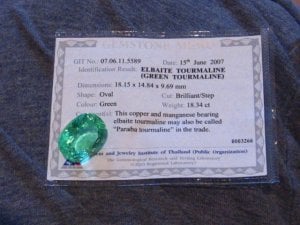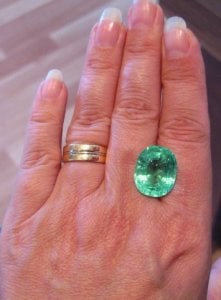- Joined
- Aug 5, 2010
- Messages
- 12,884
Chrisa222|1340050373|3218887 said:Gotcha!!!! Actually what you were being offered was not a Paraiba Tourmaline then! The thing that separates a "Paraiba" from other tourmalines is the colour staturation, neon quality and glow. If it doesn't have the "I look fake even thought I'm not" look then it's a regular Cuprian or non-Cuprian Tourmaline. Unfortunately unscrupulous sellers will pass off bog standard Tourmalines as "Paraiba" when they're nowhere near one! If you're buying a Paraiba Tourmaline look for colour, glow and neon first - clarity comes last but is important in determining a fair price.
Chrisa222|1340062060|3219040 said:Well, what do you all think of this?

